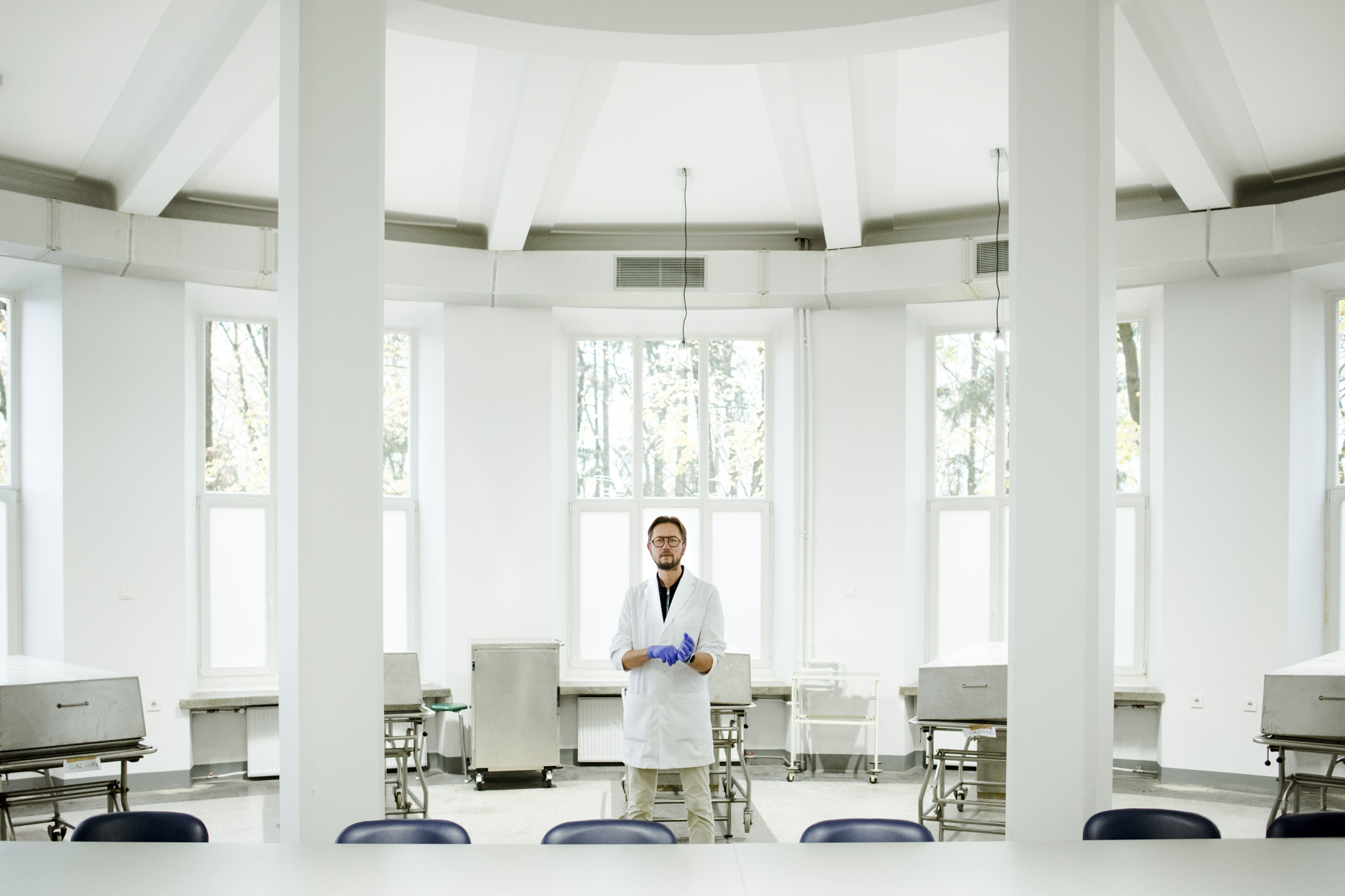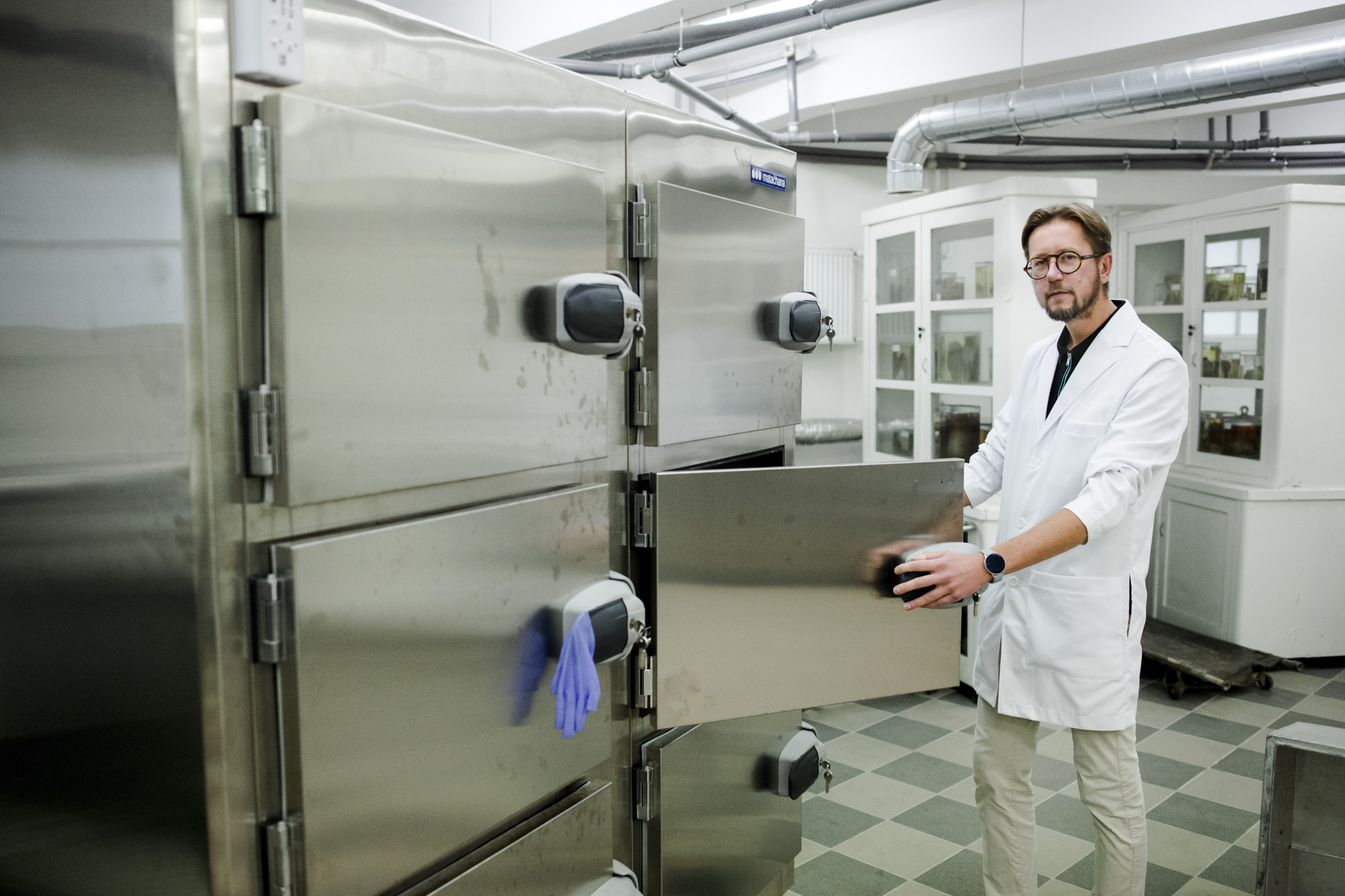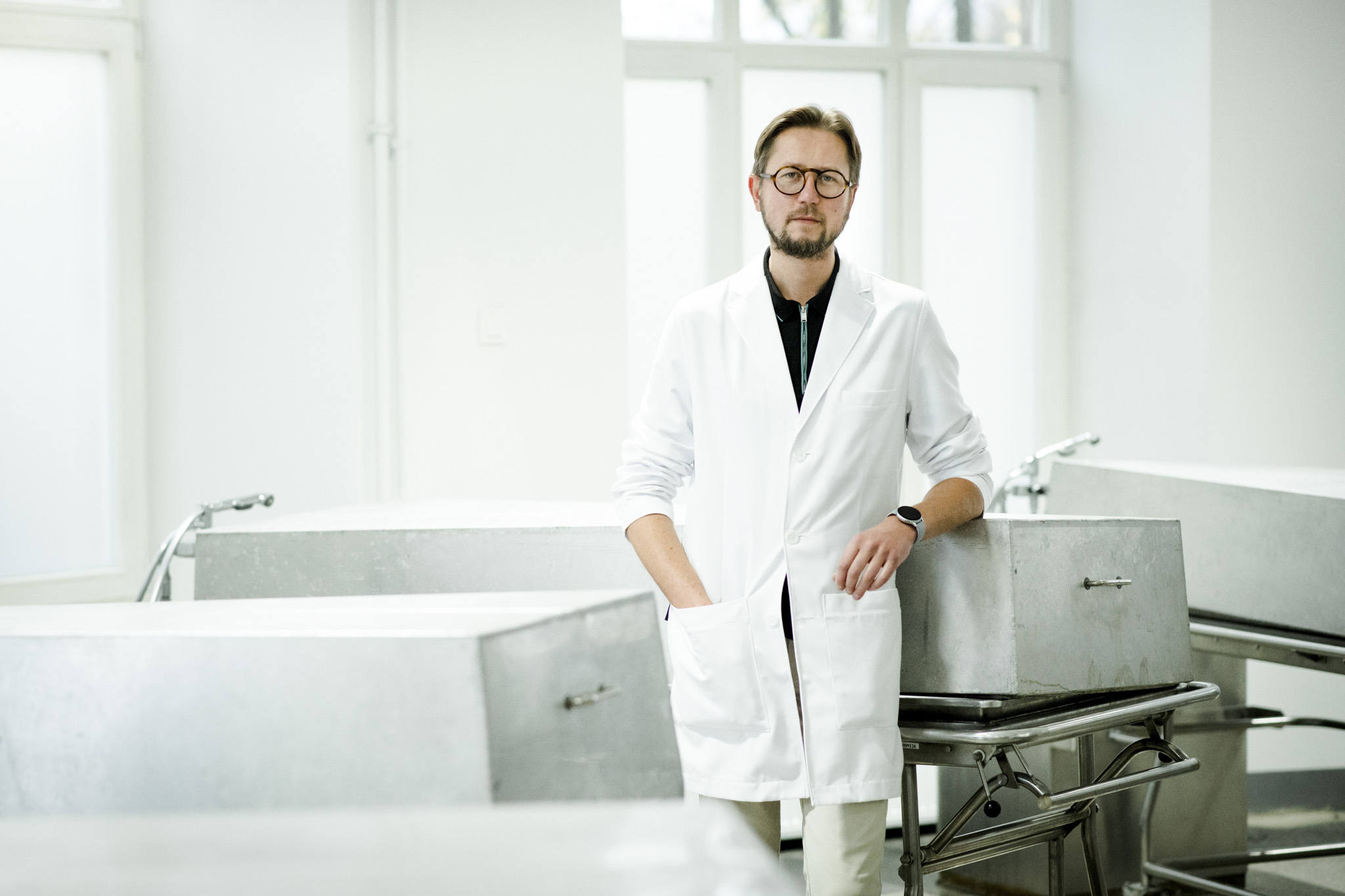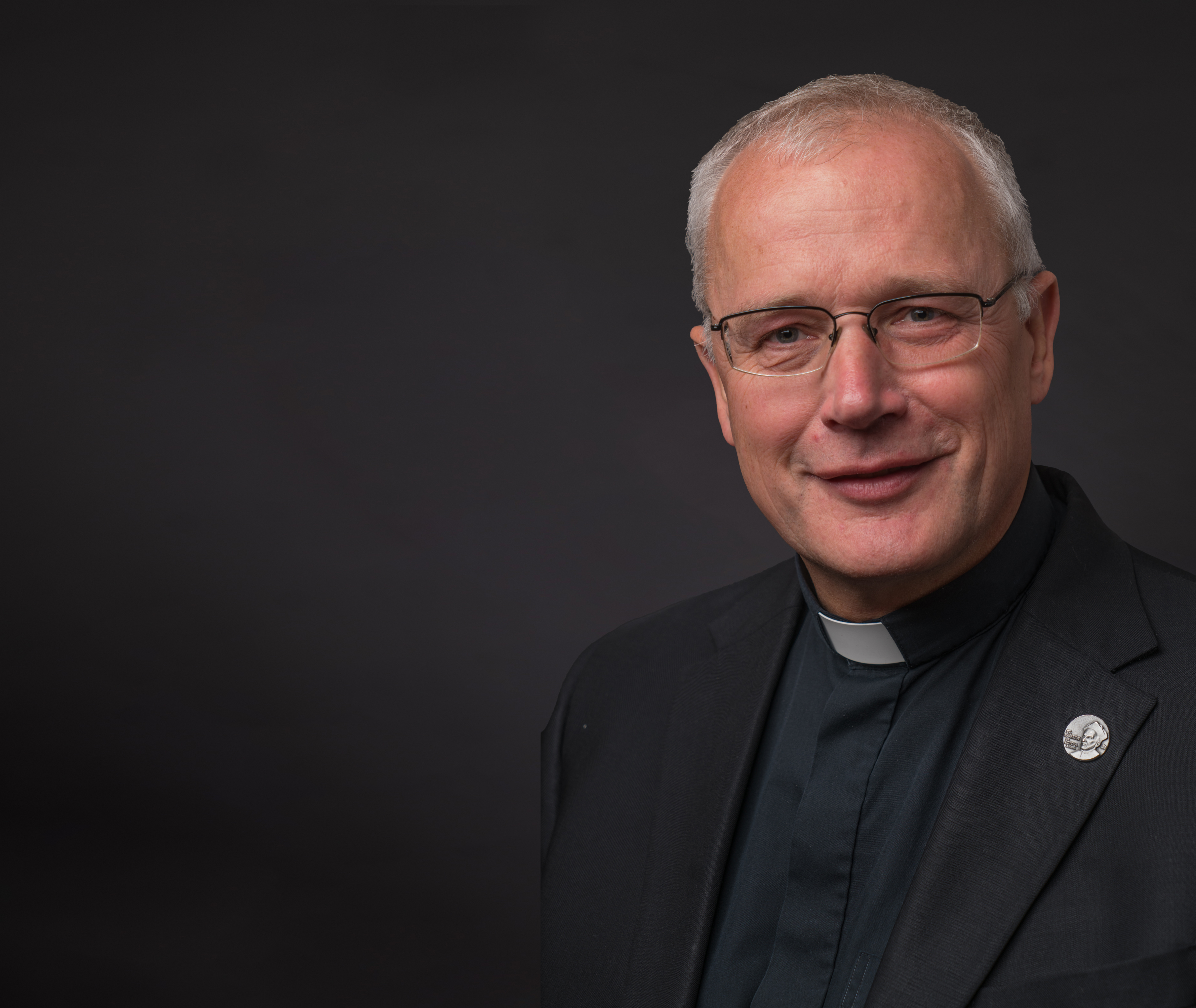VU Scientist: More and More People Want to Donate Their Bodies to Medical Science after Death
 “Up to 100 people per year ask about donating their body after death for the sake of medical science, but far fewer sign consent forms for body donation – usually about 30 people per year. A few years ago, we had a record year with over 60 people signing consents,” Andrejus Suchomlinovas, an assistant professor in the Department of Anatomy, Histology and Anthropology of the Faculty of Medicine of Vilnius University (VU MF), said.
“Up to 100 people per year ask about donating their body after death for the sake of medical science, but far fewer sign consent forms for body donation – usually about 30 people per year. A few years ago, we had a record year with over 60 people signing consents,” Andrejus Suchomlinovas, an assistant professor in the Department of Anatomy, Histology and Anthropology of the Faculty of Medicine of Vilnius University (VU MF), said.
According to the anatomist, there are currently over 300 completed consents of living donors in the register, and the trend to donate your body after death to medical science is growing. In this way, people often express gratitude for the help of doctors, and wish to contribute to the training of future doctors, qualification training of practising doctors and research.
What questions do people interested in the process of donating their body after death to medical science ask?
Most often these are technical questions – how to fill out the consent, where to apply. Since the consent must be confirmed by a notary, people ask where to find a notary who would know how to prepare everything correctly. They also ask about the period during which the body will be used, because it can be very flexible. Sometimes they ask how best to tell their family about their decision. A person may want to donate their body after death, but their relatives are against it. Although according to the law one cannot influence the expressed will of a person, the relationship with the family is very important.
What do you advise when a person does not know how to tell their relatives about their wishes?
We ask that if they don’t have full support from their family, they should at least recognise the fact. When a donor passes away, we learn of his death from their family, friends, and sometimes from police officers or emergency medical personnel. Someone must know about the person’s wishes and about the signed document. Otherwise, they won’t be able to let us know or will tell us about it when it is too late. So we ask that the donor inform the family so that there is no fierce confrontation.
Sometimes it happens that several family members come together to sign the consent for donation. For example, a husband and a wife sign a document together. I remember cases where a mother and a son, and a mother and a daughter signed the document at the same time.
Lithuanian law also allows for first-degree relatives to donate the body of their loved one. While this is rare, we have had two such cases, the last one just a couple of months ago. The man had told his relatives of his wishes, but perhaps his illness progressed very quickly and he didn’t have time to prepare the necessary documents. After his death, his daughters and grandchildren went to the notary, who arranged an urgent visit for them. The timing is important because we must receive the body no later than three days after death.
Do people who turn to you still have questions about the meaning of donating the body after death, or, on the contrary, they have clearly answered this question to themselves? Do they share any fears about their decision?
No, there are no questions regarding the meaning. Men and women of different ages, educational backgrounds, and places of residence contact us. They wish to help science and train future doctors. Many people say that they have been very sick and were helped by doctors, and they wish to thank them in this way. We do not need the body after death for any other purpose than it is useful for the living ones.
Do people have fears? I don’t think so. I remember, when the first articles about donating a body after death were published on the internet, I read comments, such as anatomists needed corpses, and they probably made fun of the dead bodies. But this only makes me smile because people who have at least some experience in the training process at the
Faculty of Medicine understand perfectly well that all bodies are treated with the greatest respect.
It would be difficult for us to function without these bodies, they are essential for anatomists and students. It is one thing to teach from books or beautiful, plastic, colourful mannequins, which can be put together like Lego, but it is something else to see the real structure, real anatomy.

Are such comments or resistance from relatives due to a lack of information or ignorance? People simply question whether donating a body is moral or ethical.
Since we live in a Catholic country where there are many believers, people naturally question how the Church responds to it. As far as I know, from talking to donors and their families, they do ask the priests for their opinion. I am very happy that donating the body after death is viewed in good faith and positively.
One more, very common question is, for example, what about the Funeral Mass, paying respects, and the burial? Some people want it, others don’t. Some tell us, for example, that when I die, send for me, others want to give their families time to say goodbye. There is an opportunity to say goodbye to the deceased before we take the body and when we return the urn with ashes to the loved ones. A regular funeral may take place, except that it will be postponed for a couple of years or more depending on what the person decided and what they wrote in the statement of their will and intent.
You mentioned that the period during which the body is used is quite flexible. How do people decide to choose a shorter or longer period?
In my opinion, a shorter period (one or several years) is chosen because of the relatives. They want to bury the urn with ashes and have the opportunity to visit the grave. However, most donors will choose to donate their body after death for an indefinite period of time. And it may vary, in theory, it can be even a few decades. Many methods of preparing the body are efficient and well-developed. I have just come to this interview from an anatomy practice – we have been working with limbs that we have been using for a long time, and we will continue using them for a while.
Are there cases where the donor changes their mind and decides that they will no longer donate their body?
Yes, there are. Today in fact I had a call from a woman who regretted saying that she had wanted to donate her body to the university and signed her consent two years ago, but her family found out about it. The family did not want to hear about it or they would refuse to help her. Since the woman is not young and needs help from the family, she decided to withdraw her consent.
So, there are such cases, but rarely. The donor may withdraw or amend their consent at any time. For example, sometimes a person writes that after the expiry of the period specified in the consent the urn with ashes should be returned, for example, to the spouse. A few years pass, the spouse, unfortunately, passes away and there is no one to return the urn to. Then the donor amends their consent and we take care of the burial. We have recently been allocated a designated plot of land for a cemetery and we will be responsible for its maintenance.

Do you think that donation of the body to medical science will still be relevant in the future? Given the rapid technological progress, and evolving simulators used by medical students, there may be doubts about it.
In the short term, technology will certainly not replace standard learning methods. There are old teaching tools such as atlases, mannequins. Atlases are images that help understand and imagine things better, but they are two-dimensional. Mannequins are three-dimensional, but they are plastic and do not give a true sense of the body. In addition, mannequins show the ideal, most common anatomy.
Speaking about modern training methods, a 3D printer can be used. You can make printed copies of an organ, usually bones, Then there are modern video tools, for example, anatomical tables. It is a large table, consisting of 1 or 2 displays where you can see a life-size picture of the human body. It is as if you were standing at the dissection table, but it is digital. Using this tool, you can turn the body in different ways and make incisions, but this is the same atlas, only more beautiful and modern. It does not give a real sense of the body. Of course, students are young and they like the table which is a cross between anatomy practice and phone games. Is there much sense from the anatomical point of view in using it? Not really.
Meanwhile, using a real body, you can feel the real tissue, a nerve, an artery, and a vein. It also helps you understand that everyone is unique and different. One person may have more muscle, than someone else. The artery may split in one place or another. One nerve may innervate the muscle, as the textbooks write, but it may be the case that a muscle will be innervated by another nerve. When you see a few bodies, where the anatomy differs in all of them you realise that everything is quite complicated.
It is also worth noting that there is the training of surgeons. They can come and practise to understand anatomy better. Surgeons must know not only the cases that occur most often, but all possible cases – this is how the donated bodies serve us for. Finally, there is research work, students use the available material to prepare their final theses.
We usually get between 4 and 10 bodies per year. We currently have 19 bodies, some are deep-frozen, they are prepared for the qualification training of doctors, and most are used by students. However, of course, we cremate those whose period of use, according to their consent, has expired.
What is the position of the Catholic Church on body donation for medical research?
Comment by Rev. Gintaras Vitkus

In all cases, the Catholic Church constantly reminds us that, whether someone is alive or dead, human dignity must be respected. After all, every human, in our belief, is created in the image and likeness of God. To reply in brief to the question of whether, after death, our body can be donated to scientific research – yes it can! Only, however, under certain conditions.
Firstly, when it comes to organ donation when certain parts of the body (the organs) or indeed, the entire body are donated, the incentive for such an action should not be based on the desire to make money. The correct motive is to serve the well-being and needs of other people (for example, the training of medical professionals, for research into diseases and injuries, the testing of preventative measures, the improvement of surgical methods or instruments, and so forth). The free will of the donor or the relatives of the donor must also be clearly expressed and it must be confirmed that the person is deceased. Finally, after an agreed time, the body or cremated remains must be buried in the cemetery. The Church does not agree with the custom of spreading the ashes of the cremated body at sea or elsewhere or keeping the ashes in private homes, because this, according to Christian belief, would not be an appropriate sign of respect for someone.